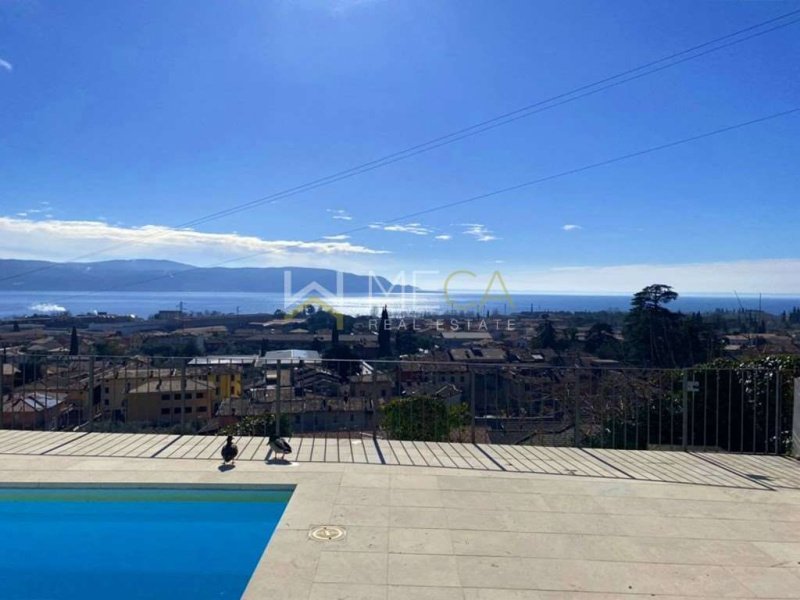160,000 €
1间卧室公寓, 47 m² 托斯科拉诺-马德尔诺, Brescia (省) 加尔达湖
加尔达湖
主要特点
描述
托斯卡纳马德诺,梦幻般现代的公寓,全景湖景,插入柠檬屋于2005年完全翻新,距离湖泊500米,距离服务300米。
公寓布置精美,享有6平方米门廊和12平方米私人起居露台的非凡全景湖景。
景色从Baldo山到Sirmione。
面积约32平方米,可步行,包括带开放式厨房的起居区、用家具隔开的卧室、起居区和浴室。
有一个游泳池,配有淋浴/更衣区,与花园一起享有非凡的全景。 公共区域还包括桑拿浴室和热水浴缸
迷人的环境,如柠檬树林,加尔达土地的象征,特别是托斯卡纳地区的象征; 环境分布在几个露台上,如一个柠檬,并被主楼的特殊和原始的缓解。
鉴于几个级别的存在,有必要考虑许多步骤的存在,进入公寓和公共区域,因此,不向那些有行动问题的人推荐该物业。
公寓条例禁止旅游租赁,但可以租赁中长期公寓。
价格包括一个独特的未盖停车位。
C级能源。
公寓费 Euro 2,500 /3,000 / 年。
托斯卡纳马德诺的历史
该地区自巴尔多利诺圣科隆巴诺修道院庭院的伦巴第时期和索拉罗洛(马内巴德尔加尔达)修道院(马内尔巴德尔加尔达)的庭院以来,一直有一部分,依赖于圣科隆巴诺迪博比奥(PC)修道院和博比奥大修道院。 僧侣对领土进行了福音传说,赞成扩大商业,农业(特别是藤蔓和橄榄树),渔业系统和文化,引入了重要的创新和开放的贸易道路。 特别是托斯卡纳有罗马血统,由一座大别墅的遗迹作证,今天,您可以看到马赛克装饰地板的部分,这些地板本来由罗马控制台马尔科诺尼奥马克里诺拥有。 托斯科拉诺教区教堂建于1571年,致力于圣彼得和保罗,长期以来是布雷西亚主教区的夏季家园。 它包含威尼斯艺术家安德里亚·塞莱斯蒂的重要绘画周期。 在托斯卡纳河谷的最后一部分,纸业从1300年代发展出来,是欧洲第一个也是最重要的地方之一。 因此,这个山谷被称为"Valley delle Cartiere"。 作为证词,有一份日期为1381年10月17日的文件,其主题是马德诺镇和托斯卡纳镇(后来分裂)之间的公约,与该公约相比,河流水的划分和使用条例分为九点。
能量类: C 65.26 kWh / m2 a
公寓布置精美,享有6平方米门廊和12平方米私人起居露台的非凡全景湖景。
景色从Baldo山到Sirmione。
面积约32平方米,可步行,包括带开放式厨房的起居区、用家具隔开的卧室、起居区和浴室。
有一个游泳池,配有淋浴/更衣区,与花园一起享有非凡的全景。 公共区域还包括桑拿浴室和热水浴缸
迷人的环境,如柠檬树林,加尔达土地的象征,特别是托斯卡纳地区的象征; 环境分布在几个露台上,如一个柠檬,并被主楼的特殊和原始的缓解。
鉴于几个级别的存在,有必要考虑许多步骤的存在,进入公寓和公共区域,因此,不向那些有行动问题的人推荐该物业。
公寓条例禁止旅游租赁,但可以租赁中长期公寓。
价格包括一个独特的未盖停车位。
C级能源。
公寓费 Euro 2,500 /3,000 / 年。
托斯卡纳马德诺的历史
该地区自巴尔多利诺圣科隆巴诺修道院庭院的伦巴第时期和索拉罗洛(马内巴德尔加尔达)修道院(马内尔巴德尔加尔达)的庭院以来,一直有一部分,依赖于圣科隆巴诺迪博比奥(PC)修道院和博比奥大修道院。 僧侣对领土进行了福音传说,赞成扩大商业,农业(特别是藤蔓和橄榄树),渔业系统和文化,引入了重要的创新和开放的贸易道路。 特别是托斯卡纳有罗马血统,由一座大别墅的遗迹作证,今天,您可以看到马赛克装饰地板的部分,这些地板本来由罗马控制台马尔科诺尼奥马克里诺拥有。 托斯科拉诺教区教堂建于1571年,致力于圣彼得和保罗,长期以来是布雷西亚主教区的夏季家园。 它包含威尼斯艺术家安德里亚·塞莱斯蒂的重要绘画周期。 在托斯卡纳河谷的最后一部分,纸业从1300年代发展出来,是欧洲第一个也是最重要的地方之一。 因此,这个山谷被称为"Valley delle Cartiere"。 作为证词,有一份日期为1381年10月17日的文件,其主题是马德诺镇和托斯卡纳镇(后来分裂)之间的公约,与该公约相比,河流水的划分和使用条例分为九点。
能量类: C 65.26 kWh / m2 a
此文本已自动翻译。
细节
- 物业类型
- 公寓
- 状况
- 全面整修/可居住
- 房屋面积
- 47 m²
- 卧室
- 1
- 浴室
- 1
- 花园
- 500 m²
- 露台
- 12 m²
- 能效评级
- 65,26
- 参考代码
- MECA0481
距兴趣点的距离:
距离以直线计算
- 机场
34.0 km - Verona VBS - Brescia Montechiari
35.0 km - Verona VRN - Valerio Catullo
71.0 km - Milano BGY - Orio Al Serio
95.0 km - Parma PMF - Giuseppe Verdi
- 高速公路出口
- 17.1 km
- 医院
- 4.4 km - Casa di Cura Villa Gemma
- 海岸
- 137.5 km
- 滑雪胜地
- 13.0 km
在此物业附近
- 外出吃饭
110 m - 咖啡店 - Gelateria Castellari
540 m - 餐厅 - Hotel Adria Di Garda E Dintorni Srl
620 m - 酒吧
970 m - 冰淇淋店 - Gelateria Ciocolat
- 体育运动
1.3 km - 体育中心 - Toscolano Maderno A.C. - 足球
2.0 km - 高尔夫俱乐部 - Golf Bogliaco
7.7 km - 马术中心
12.0 km - 健身房
- 学校
200 m - 学校
5.7 km - 大学 - Università degli Studi di Milano - Palazzo Feltrinelli
33.0 km - 高等教育机构 - Conservatorio di musica Luca Marenzio
- 药房
- 1.1 km - 药房
- 兽医
- 10.3 km - 兽医 - Clinica Veterinaria S. Antonio Di Emilio Smadelli
托斯科拉诺-马德尔诺:关于城市的信息
- 海拔
- 高出海平面86m
- 面积
- 58.17 km²
- 地理区域
- 内陆山区
- 人口
- 7593
您如何看待该广告的质量?
提供有关此广告的反馈,帮助我们改善您的Gate-away体验。
请不要评估物业本身,而只是评估其展示的质量。


